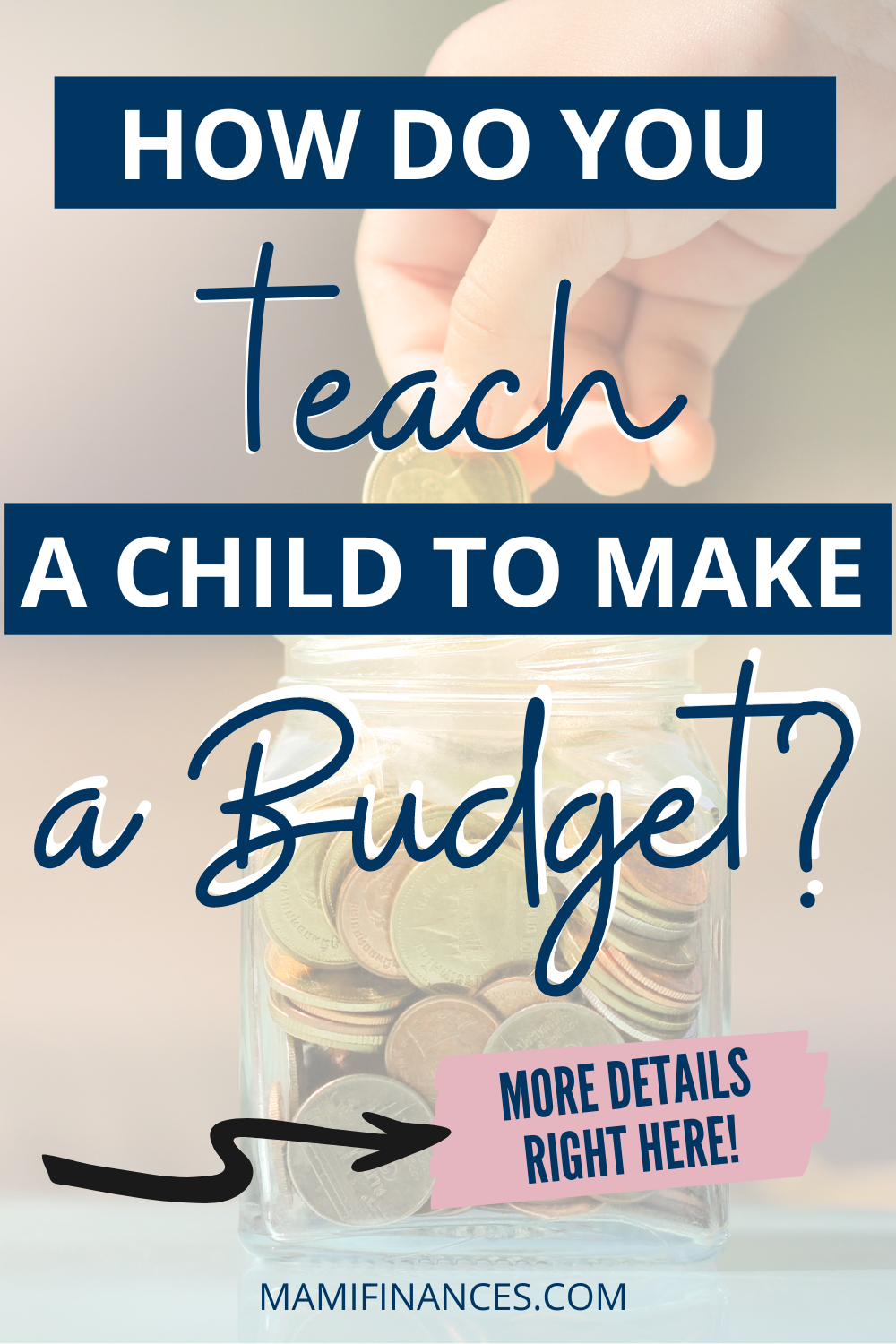How Do You Teach a Child to Make a Budget?
Teaching children about budgeting is imperative for their future financial success. The lessons they learn about money management in their formative years are critical in shaping their ability to handle finances responsibly as adults. By introducing kids to the concept of budgeting early, they not only become financially literate but also learn the value of money and how to make smart financial decisions.

Benefits of teaching children about budgeting
- Builds Financial Literacy: Early introduction to budgeting equips children with essential knowledge about managing finances, encouraging them to become financially savvy adults.
- Cultivates Responsible Habits: Learning to budget fosters restraint and prioritization, which are important traits in personal money management.
Importance of financial literacy in childhood
- Foundation for Sound Financial Decisions: Starting financial education early lays the groundwork for making informed decisions around spending, saving, and investing.
- Prepares for the Future: Understanding budgeting helps children prepare for real-world challenges, ensuring they handle future financial responsibilities with confidence.
Understanding Income
| Age Group | What to Teach |
|---|---|
| 3-5 years | Basic money concepts, such as identifying coins and understanding the value of money. Introduce the concept of saving by using a piggy bank. |
| 6-10 years | Teach the importance of budgeting by setting up a simple allowance system. Show how to allocate money for different purposes, like spending, saving, and sharing. Introduce the idea of needs vs. wants. |
| 11-14 years | Dive deeper into budgeting by introducing the concept of income and expenses. Teach about budget categories, tracking spending, and setting savings goals. Discuss the impact of choices on long-term financial well-being. |
| 15-18 years | Focus on real-world financial skills, such as comparing prices, understanding credit, and creating a budget based on income and expected expenses. Introduce the concept of managing a bank account and using debit cards responsibly. |
Explaining income to your child
- Simplified Income Discussion: Start by breaking down the concept of income into simpler terms that a child can grasp. Discuss various sources of income, such as wages from a job or an allowance.
- Necessity of Expenses: Explain that certain expenses are necessary, like housing, food, and utilities, and how one's income must cover them.
- Disposable Income: Once the essentials are deducted, the leftover amount is available for other expenses or savings, teaching them about disposable income.
Using examples to illustrate income concepts
- Real-Life Scenarios: Use real examples from your own income or create hypothetical situations to demonstrate how income is allocated to expenses.
- Interactive Learning: Engage your child by working together on a mock budget to illustrate how money flows from income to various spending categories.
- Visual Aids: Consider using charts or apps designed for children to help them visually understand the breakdown of income and expenses.

Fixed and Variable Costs
Identifying fixed costs
- Definition of Fixed Expenses: These are costs that do not change monthly, such as rent or mortgage payments, car payments, and insurance premiums.
- Importance in Budgeting: Recognizing fixed expenses is crucial as they form the baseline of any budget, representing outflows that must be met first.
- Strategies for Managing Fixed Costs: Students can learn to prioritize these costs and understand the importance of meeting these obligations to avoid financial difficulties.
Differentiating between fixed and variable costs
- Understanding Variable Expenses: Unlike fixed costs, variable expenses change in amount depending on usage or consumption, like groceries, gas, and entertainment.
- Allocating Funds Wisely: The game requires students to adjust their spending on variable expenses based on the remaining budget after accounting for fixed costs.
- Enhancing Decision-Making Skills: By categorizing costs and making spending choices, students can enhance their financial literacy and budgeting skills effectively.
Needs vs. Wants
Explaining the difference between needs and wants
- Defining Needs and Wants: Needs are essentials required for survival, such as food, shelter, and clothing, while wants are items or services that enhance one's life but are not essential.
- Setting a Budget: Introducing a budget helps children distinguish needs from wants by showing them how to allocate funds for necessary items first.
- Practical Learning: Assigning a budget, whether real or hypothetical, gives children hands-on experience in managing money and making decisions based on their basic needs versus desires.
Teaching children to prioritize and make choices
- Playing the Wants Game: An interactive way for kids to learn about financial priorities by classifying items as needs or wants and explaining their reasoning.
- Creating a Collage: An engaging activity that involves grouping images of items into needs and wants, helping children visualize and understand the concept more clearly.
- Imparting Budgeting Skills: Regular practice with budgeting teaches children the importance of prioritizing needs over wants and helps them develop good financial habits early on.

Setting Savings Goals
Introducing the concept of savings goals
When it comes to financial literacy, it's never too early to start educating children about the importance of saving money. Parents can play a pivotal role by providing simple and clear explanations about what saving goals are and why they are important.
By starting the conversation early, children learn to understand the value of money and the satisfaction of reaching a savings target. Whether saving for a new toy or setting aside a little each week for a family trip, these early lessons lay the groundwork for smart financial habits in the future.
Using different budgeting methods to save money
To help children practice saving effectively, parents can introduce various budgeting techniques. Games that simulate real-life financial situations can be fun and educational, allowing children to make decisions regarding spending and saving in a controlled environment. By providing them with a mock salary and a list of expenses, children learn to prioritize their spending.
This engaging approach to money management enables kids to grasp the principles of budgeting, distinguishing between necessities and luxuries, and setting realistic saving goals — all pivotal skills for their financial literacy development.
Budget Categories
Determining budget categories with your child
When teaching kids to budget, identifying specific categories for their money is essential. Parents should guide their children in listing typical budget categories such as savings, essentials, education, and entertainment. This process allows the young saver to visualize where their money is going. It is a practical lesson in organizing finances and setting priorities. By determining and understanding these categories, children can create a framework that helps them make informed choices about their spending.
Assigning the percentage of income to each category
The next step is to allocate the allowance or income received accordingly. A healthy starting point is directing a significant portion into savings. The 20% rule mentioned earlier is a strong foundation, teaching kids the importance of saving before spending.
The remaining income can then be distributed among the other categories as decided by the child, with parental guidance. This hands-on approach to budgeting enables kids to learn the value of money and the power of financial planning, setting them on a path to becoming savvy savers and spenders.

Tracking and Monitoring
Utilizing budgeting tools for easier tracking
Children can be introduced to various budgeting tools to simplify the process of tracking personal expenses and monthly budgets. These can range from simple spreadsheets to user-friendly mobile apps for budget management. They can effortlessly input their income and log their expenses by engaging with technology.
Parents should assist their children in selecting an appropriate tool that aligns with their age and understanding. This method teaches kids to be tech-savvy and makes the routine of recording financial transactions more engaging and accessible.
The importance of regularly reviewing expenses
Monitoring personal finances isn't a set-and-forget task. Children must develop the habit of regularly reviewing their expenses against their budget. This practice helps them become more conscious of their spending patterns and identify areas where they can cut back if necessary.
Parents play a vital role in setting up periodic check-ins, which could be weekly or monthly, to go over the child's budget with them. These review sessions encourage accountability and provide opportunities to celebrate successes or recalibrate goals if they stray from their budget plan.

Involving Your Child in Decision Making
Encouraging your child to participate in financial decisions
Parents are advised to actively involve their children in financial decisions to pave the way for practical learning. When tackling tasks such as grocery shopping, demonstrate the process of seeking discounts and comparing prices to emphasize cost-effectiveness. In these real-life scenarios, children can learn the importance of prioritizing needs over wants and the value of money.
Furthermore, parents can encourage older children to consider long-term financial strategies by illustrating the fundamentals of retirement accounts like a 401K and the remarkable effect of compounding interest. Such involvement can enlighten them on the potential growth of an investment over time, sparking a keen interest in future financial planning.
Teaching them about trade-offs and opportunity costs
Understanding trade-offs and opportunity costs is paramount in children’s financial education. By demonstrating these concepts in day-to-day decisions, parents can help children grasp that choosing one option may mean forgoing another. This could be as simple as deciding between buying a toy or saving the money for a future purchase.
These lessons can be expanded to illustrate how managing finances effectively requires careful consideration of the potential benefits of each spending decision, as well as the long-term repercussions of their choices. Discussing these trade-offs openly instills decision-making skills that are vital to financial literacy and independence in adulthood.

Conclusion
The Long-term Benefits of Teaching Children about Budgeting
Teaching children about budgeting at a young age can have lifelong benefits. By understanding how to budget, children can develop important skills such as setting financial goals, tracking expenses, and prioritizing spending. This knowledge can help them avoid the common pitfall of overspending, which can lead to financial stress and debt later in life. Also, involving children in financial decisions and teaching them about trade-offs and opportunity costs can further enhance their financial literacy and decision-making skills.
By actively involving children in practical learning experiences, such as grocery shopping and discussing long-term financial strategies, parents can instill a strong foundation for future financial planning. These skills will serve children well as they grow up and navigate their own financial responsibilities.
Tips for Ongoing Financial Education as They Grow Up
As children grow up, it's important to continue their financial education. Parents can provide opportunities for children to earn money through chores or part-time jobs and encourage them to save and budget their earnings. Also, as children enter adolescence, parents can introduce more complex financial concepts like credit cards, loans, and investments.
Teaching children about these topics in a supportive and gradual manner will help them develop the knowledge and skills needed to make informed financial decisions as adults. By maintaining open and ongoing conversations about money management, parents can ensure that their children have a strong foundation for financial independence and success.





